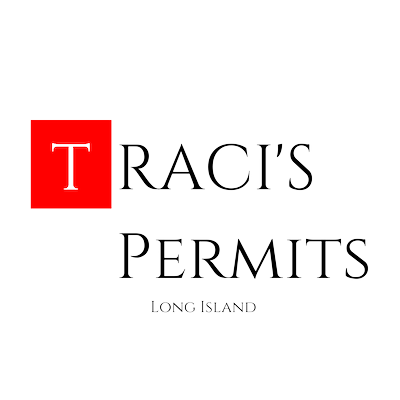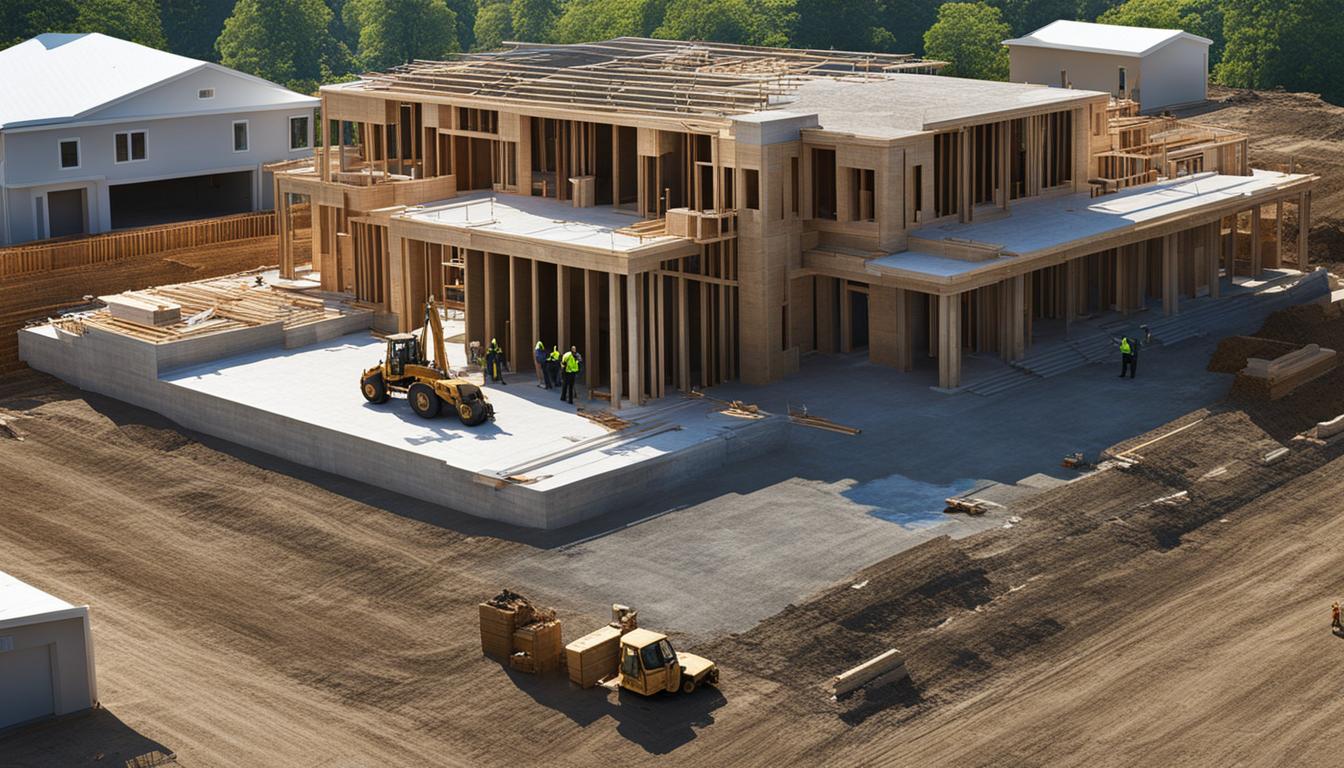Get building permits, variances, maps & COs quickly on Long Island! Call 631-492-0927 for fast service at TracisPermits.com.
Key Takeaways:
- Building permits, variances, radius maps, and certificates of occupancy are essential for construction projects in Cove Neck.
- It is important to navigate the building permit process correctly by contacting the municipality and the Nassau County Department of Public Works.
- Securing variances may be necessary to deviate from zoning regulations, requiring approval from the relevant authorities.
- Utilizing radius maps helps in construction planning and identifying potential concerns or restrictions.
- A Certificate of Occupancy signifies compliance with building codes and regulations and is crucial before occupying a property.
Navigating the Building Permit Process in Cove Neck
When undertaking construction projects in Cove Neck, it is important to navigate the building permit process correctly. Contacting both the municipality within which the property lies and the Nassau County Department of Public Works (DPW) is essential. Additionally, it is crucial to comply with zoning regulations, construction approvals, and land use regulations.
Obtaining the necessary building permits is a crucial step in ensuring compliance with local regulations and ordinances. Building permits are required for various types of construction projects, including new constructions, renovations, additions, and demolitions. They serve as official authorization to proceed with the proposed work and help to ensure that the construction meets safety standards and is in line with zoning and building codes.
The permit application process typically involves submitting detailed plans and specifications to the municipality or the DPW. This may include architectural drawings, engineering reports, and other relevant documents. It is important to provide accurate and comprehensive information to expedite the review process and avoid potential delays.
| Key Steps in the Building Permit Process | Additional Notes |
|---|---|
| 1. Research local building codes and regulations | Check with the municipality or DPW for specific requirements. |
| 2. Prepare detailed plans and specifications | Include architectural drawings, engineering reports, etc. |
| 3. Submit the permit application | Applications can often be submitted online or in-person. |
| 4. Pay the necessary fees | Permits typically require payment of a fee based on project scope. |
| 5. Await review and approval | The review process can take several weeks, depending on the complexity of the project. |
| 6. Schedule inspections | Inspections are typically required at various stages of the construction process. |
| 7. Obtain the final Certificate of Occupancy | The CO confirms that the construction meets all requirements and is safe for occupancy. |
By following the necessary processes and working closely with the relevant authorities, property owners and developers can navigate the building permit process in Cove Neck efficiently and effectively.
Securing Variances for Construction Projects
When undertaking construction projects in Cove Neck, it is essential to adhere to established zoning regulations. However, in some cases, deviations from these regulations may be necessary to accommodate specific project requirements. This is where securing variances becomes crucial.
To obtain variances, it is essential to seek approval from the relevant authorities, such as the municipality or planning commission regulating and administering zoning and planning in Nassau County. The process typically involves submitting an application, which may require detailed plans and documentation outlining the proposed variance and its impact on the surrounding area.
While the specific requirements for securing variances may vary depending on the project and the municipality, it is advisable to reach out to the relevant authorities early in the planning process. By understanding the procedures and requirements, property developers can effectively navigate the variance application process and increase the chances of obtaining the necessary approvals.
Key Considerations for Securing Variances
When seeking variances for construction projects, there are several key considerations to keep in mind to increase the likelihood of a successful application:
- Justification: Clearly articulate the reasons why the variance is necessary and how it aligns with the overall project goals.
- Impact Assessment: Provide a thorough assessment of the potential impact of the variance on the surrounding area, addressing any potential concerns or conflicts.
- Public Input: Engage with the local community and address any feedback or objections, demonstrating a commitment to responsible development.
- Expert Guidance: Seek the support of experienced professionals, such as architects, engineers, and legal advisors, who can provide valuable insights and assistance throughout the application process.
By carefully addressing these considerations and working closely with the relevant authorities, property developers can navigate the variance application process successfully. This will help ensure that construction projects in Cove Neck comply with zoning regulations, promote responsible development, and achieve the desired outcomes.
| Variance | Description |
|---|---|
| Use Variance | A variance that allows the property to be used for purposes not typically permitted under the existing zoning regulations. |
| Area Variance | A variance that grants relief from regulations regarding lot size, setbacks, height restrictions, or other physical characteristics of the property. |
| Dimensional Variance | A variance granted for minor deviations from dimensional requirements, such as setbacks or lot coverage limits. |
| Hardship Variance | A variance granted when strict adherence to zoning regulations would result in undue hardship for the property owner. |
Utilizing Radius Maps for Construction Planning
When it comes to construction planning in Cove Neck, utilizing radius maps is a crucial step. These maps provide valuable insights and information about the surrounding areas, helping builders and developers assess potential impacts and make informed decisions. Whether it’s determining setbacks, identifying potential constraints, or visualizing project boundaries, radius maps are an essential tool for successful construction projects.
Radius maps display distances from a central point and can be customized to reflect specific requirements. They help builders visualize the proximity of existing structures, roads, utilities, and other important features that may influence the project design and construction process. By analyzing the radius map, builders can better understand any potential implications on neighboring properties, including visual impact, noise levels, or traffic patterns.
Obtaining accurate and up-to-date radius maps is essential for effective construction planning. Collaborating with experts in cartography or land surveying can ensure that the maps reflect accurate measurements and include all relevant information. These professionals can help identify and analyze potential concerns or restrictions within the project area, allowing builders to adjust plans and mitigate any potential issues.
The Value of Detailed Radius Maps
One of the key benefits of utilizing radius maps is their ability to provide detailed information and insights for construction planning. By overlaying the project’s proposed boundaries onto the map, builders can assess potential conflicts with nearby properties and infrastructure. This information can help identify necessary adjustments or design modifications to ensure compliance with zoning regulations and minimize any adverse effects on the community.
“Radius maps are an invaluable resource for builders and developers in Cove Neck. They provide a comprehensive view of the surroundings, allowing us to assess potential impacts and take proactive measures to ensure successful project execution.”
Furthermore, radius maps can also assist in the permitting process by demonstrating compliance with setback requirements or other zoning regulations. By including radius maps in permit applications, builders can provide visual evidence of their adherence to legal requirements, simplifying the review and approval process.
Understanding the Importance of Certificate of Occupancy
A Certificate of Occupancy (CO) is a crucial document that signifies a property’s compliance with building codes and regulations. It is required before a property can be occupied or put to its intended use. Failure to obtain a CO can result in legal consequences, so it is essential to ensure all construction work follows the building code compliance standards and seek a CO upon completion.
Obtaining a Certificate of Occupancy is an important step in the property development process. It not only demonstrates that the construction adheres to the necessary safety regulations but also ensures that the property is suitable for habitation or business operations. A CO verifies that the building has undergone all required inspections and meets the minimum quality and safety standards set by the local authorities.
Without a Certificate of Occupancy, property owners may face fines, penalties, or even legal action. It is vital to obtain this document to avoid potential setbacks and ensure compliance with local regulations.
Property developers should prioritize obtaining a CO to protect their investment and ensure that their property is legally compliant. Before applying for a Certificate of Occupancy, it is essential to thoroughly review the building codes and regulations specific to the municipality where the property is located. This will help developers understand the requirements and inspections needed to secure the CO.
In conclusion, obtaining a Certificate of Occupancy is a crucial step in property development to ensure legal compliance and the safety of occupants. It is advisable to consult with professionals who specialize in building codes and regulations to navigate the CO application process smoothly. By prioritizing the obtention of a CO, property developers can avoid potential legal consequences and ensure that their properties meet the necessary standards for occupation.
Call 631-492-0927 for fast service at TracisPermits.com and get your building permits, variances, maps, and COs quickly on Long Island!
Role of Nassau County Departments in Construction and Permits
When it comes to construction and permits in Cove Neck, Nassau County plays a pivotal role in regulating and administering the process. Several key departments are involved in overseeing construction projects and ensuring compliance with building codes and regulations. Understanding the functions of these departments is essential for a successful construction endeavor.
Nassau County Department of Public Works
The Department of Public Works (DPW) in Nassau County is responsible for a wide range of infrastructure-related activities. When it comes to construction projects, the DPW oversees road openings, sewer usage, and construction on county roads. It is important to consult with the DPW to obtain the necessary permits and approvals for any work that will impact county infrastructure.
Economic Development Office
The Economic Development Office in Nassau County focuses on promoting and supporting economic growth in the region. They can provide valuable information and resources related to construction projects, such as zoning regulations, incentives for development, and business assistance programs. Contacting the Economic Development Office can help developers navigate the various aspects of their construction project and access available resources.
Planning Commission
The Nassau County Planning Commission plays a crucial role in land use planning and development. They review and make recommendations on zoning changes, subdivision plans, and development proposals. Developers should consult with the Planning Commission to ensure compliance with zoning regulations, obtain necessary approvals, and address any land use concerns.
| Department | Responsibilities | Contact Information |
|---|---|---|
| Department of Public Works | Oversee road openings, sewer usage, and construction on county roads | Phone: 631-492-0927 Website: www.nassaucountyny.gov |
| Economic Development Office | Provide information on zoning regulations, incentives, and business assistance | Phone: 631-492-0927 Website: www.nassaueconomicdevelopment.org |
| Planning Commission | Review zoning changes, subdivision plans, and development proposals | Phone: 631-492-0927 Website: www.nassaucountyny.gov |
By collaborating with the Nassau County Department of Public Works, the Economic Development Office, and the Planning Commission, developers in Cove Neck can ensure compliance with regulations, obtain necessary permits, and navigate the construction process successfully. Understanding the roles and responsibilities of these departments is key to a smooth and efficient construction project in Nassau County.
Cove Neck Local Building Permit Information
If you reside in Cove Neck and are planning a construction project, it is crucial to have access to local building permit information. By referring to the websites and resources provided by municipalities within the area, you can ensure that you have the necessary documentation and approvals for your project. Here are some key cities, towns, and villages in the Cove Neck area that offer building permit information:
City of Bayville
The City of Bayville provides comprehensive information on building permits, including application requirements, fees, and contact details. Visit their website at https://www.bayvillevillageny.gov/ to find out more.
Village of Cedarhurst
The Village of Cedarhurst offers a wealth of resources for construction projects, including building permit applications and guides. You can access this information on their website: https://www.cedarhurst.govoffice.com/
Village of East Rockaway
If you are planning a construction project in the Village of East Rockaway, their website provides valuable information on building permits, applications, and regulations. Visit https://www.eastrockawayvillage.org/ to learn more about the process.
Remember to consult the specific municipality’s website or reach out to them directly for accurate and up-to-date information regarding building permits in Cove Neck.
| City/Town/Village | Website | Contact Information |
|---|---|---|
| City of Bayville | https://www.bayvillevillageny.gov/ | Phone: XXX-XXX-XXXX Email: info@bayvillevillageny.gov |
| Village of Cedarhurst | https://www.cedarhurst.govoffice.com/ | Phone: XXX-XXX-XXXX Email: info@cedarhurst.gov |
| Village of East Rockaway | https://www.eastrockawayvillage.org/ | Phone: XXX-XXX-XXXX Email: info@eastrockawayvillage.org |
Conclusion
In conclusion, obtaining building permits, variances, radius maps, and certificates of occupancy is essential for streamlined construction and legal compliance in Cove Neck. By following the necessary processes and reaching out to the appropriate authorities, property developers can ensure a smooth and successful construction project on Long Island.
Remember to consult professionals and experts in the field for guidance and support throughout the process. To get building permits, variances, maps, and COs quickly on Long Island, contact Traci’s Permits at 631-492-0927 or visit TracisPermits.com.
With their fast service and expertise, you can navigate the building permit process in Cove Neck efficiently and stay compliant with zoning regulations and construction approvals. Don’t let the complexities of permits and regulations hinder your construction project’s success. Trust Traci’s Permits to assist you every step of the way.
FAQ
How do I navigate the building permit process in Cove Neck?
To navigate the building permit process in Cove Neck, it is important to contact both the municipality within which the property lies and the Nassau County Department of Public Works (DPW). Complying with zoning regulations, construction approvals, and land use regulations is also crucial.
What are variances and how do I secure them for construction projects?
Variances allow for deviating from established zoning regulations. To secure variances for construction projects, you need to obtain approval from the municipality or planning commission regulating and administering zoning and planning in Nassau County.
How can I utilize radius maps for construction planning in Cove Neck?
Radius maps are essential tools for construction planning. They help visualize distances and boundaries, identify potential concerns or restrictions, and determine the impact of a project on its surroundings. Consult with experts in cartography or land surveying to obtain accurate and up-to-date radius maps.
Why is a Certificate of Occupancy (CO) important, and how can I obtain one?
A Certificate of Occupancy (CO) signifies a property’s compliance with building codes and regulations. It is required before a property can be occupied or put to its intended use. To obtain a CO, ensure all construction work follows building code compliance standards and seek a CO upon completion.
What is the role of Nassau County Departments in construction and permits?
The Nassau County Department of Public Works, the Economic Development Office, and the Planning Commission play significant roles in regulating and administering construction and permits in the area. Contacting these departments is essential for information on the permit application process, construction on county roads, sewer use, road openings, and other related matters.
Where can I find local building permit information in Cove Neck?
Cove Neck residents can find local building permit information online for various cities, towns, and villages within the area. Bayville, Cedarhurst, East Rockaway, and other municipalities offer resources and contact information for permit applications. Refer to the specific municipality’s website or reach out to them directly for accurate and up-to-date information.












